Kaya turns 12
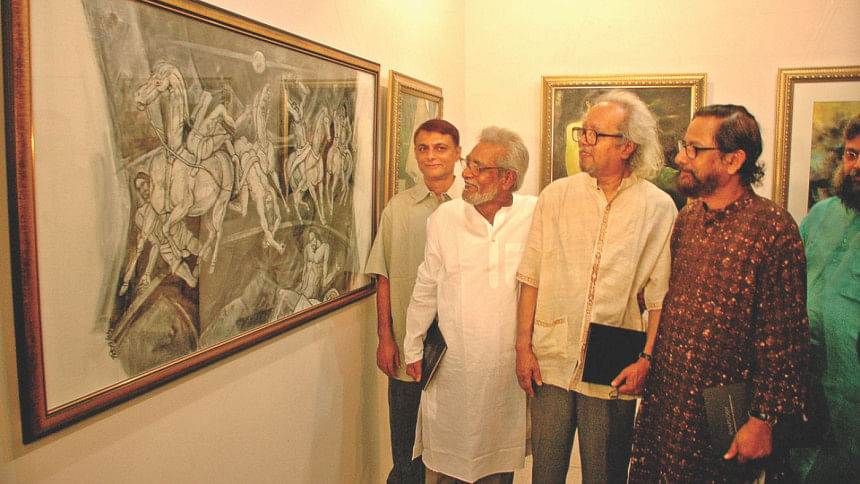
Its the job of a gallery to promote the future Qayyum Choudhury- Goutam Chakraborty
In a society where buying and selling of art mostly depends on the taste of the elite class, very few people can successfully make a living from running an art gallery. In the last two decades, Dhaka has seen the rise of five or six new galleries whilst simultaneously witnessing the demise of an equal number of them as well. The art market of Dhaka is volatile for any gallery to run a business—and only the toughest ones survive.
One such surviving gallery is Galleri Kaya of artist Goutam Chakraborty. His gallery was launched in May 2004 and this month marks its 12th year and he is celebrating the anniversary by holding an exhibition of the works of 28 artists.
Some of the paintings in the exhibition, that opened Saturday and will continue till May 28, are very rare. For example, a 1956 Still Life oil on canvas by late artist Rashid Chowdhury is considered a gem. It also has rare works of late Aminul Islam, Debdas Chakraborty, Hashi Chakraborty, Mohammad Kibria, SM Sultan and even living artist Murtaja Basheer.
Surviving 12 years was not an easy ride for Galleri Kaya—especially as it is located in Uttara, on the edge of Dhaka city. For Goutam, who had been making a living as a freelance artist and designer, launching the gallery was an idea that he just wanted to try out.
"I am an artist who grew up knowing most of the artists of the country. I moved to Uttara at that time and there was no gallery there," said Goutam last week, "I had a ready space available at my house. So I thought let's try this out. If it succeeds, I would continue to be a freelancer."
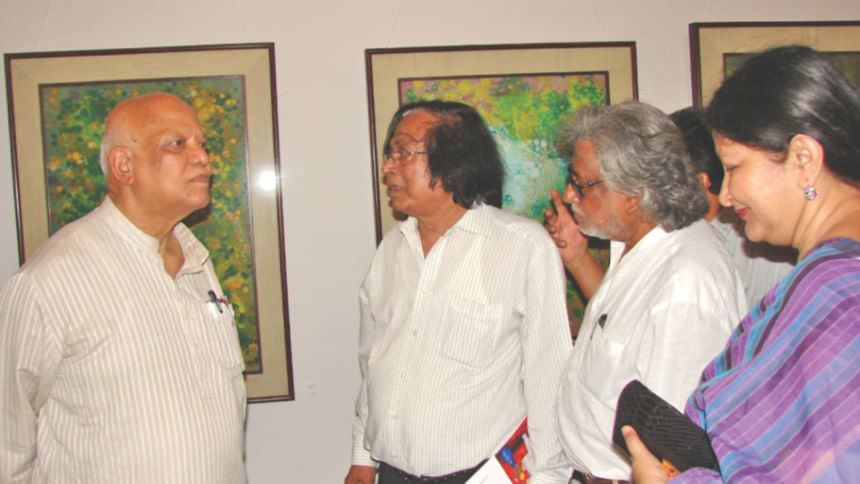
Goutam did not have the experience to run a gallery. He had to learn how to catalogue the art he is putting up for exhibitions and then keep track of who is buying the art at what price and at what time. That is because art is always re-sold at a price that keeps on going up. He also had to authenticate the art he is selling as there are fake art works of famous painters in the market.
"While I got the cooperation of artists and buyers from the beginning, many people doubted the future of the gallery initially because of its location," he said.
And yet the gallery has held 87 exhibitions so far; 52 solo and 35 group exhibitions. The gallery also organised five art trips and four art camps and one workshop each on print and serigraphy.
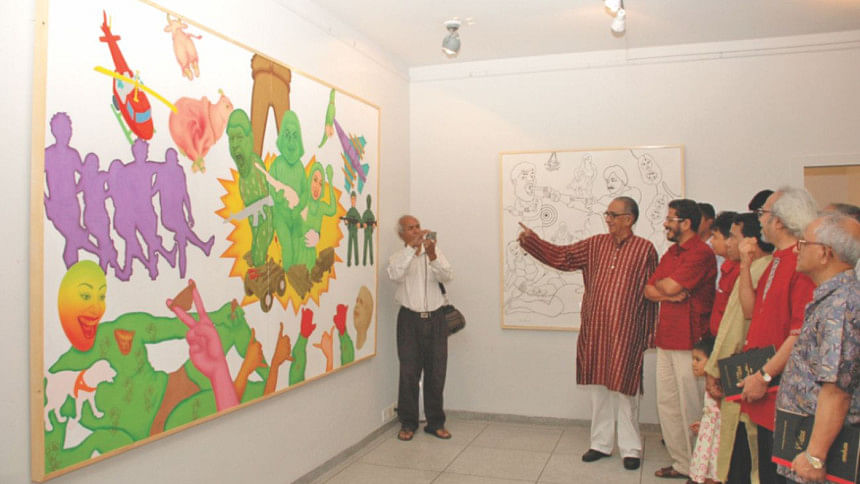
"Since my childhood I have seen artists grow and I realised when an artist begins his career, he or she needs patronisation. One day that artist will become renowned. Today Murtaja Basheer or Rafiqunnabi do not need patronisation. Rather, if they patronise a gallery—that gallery will be successful," Goutam notes, "this is why from the beginning Galleri Kaya emphasised on young and upcoming artists."
But the Bangladeshi galleries do not emphasise on young upcoming artists much and bank more on already famous artists. As a result, the art market is failing to create new buyers—who usually start with buying affordable art works (made by young artists). As a result the market is not as stable as that in India where it is run very professionally.
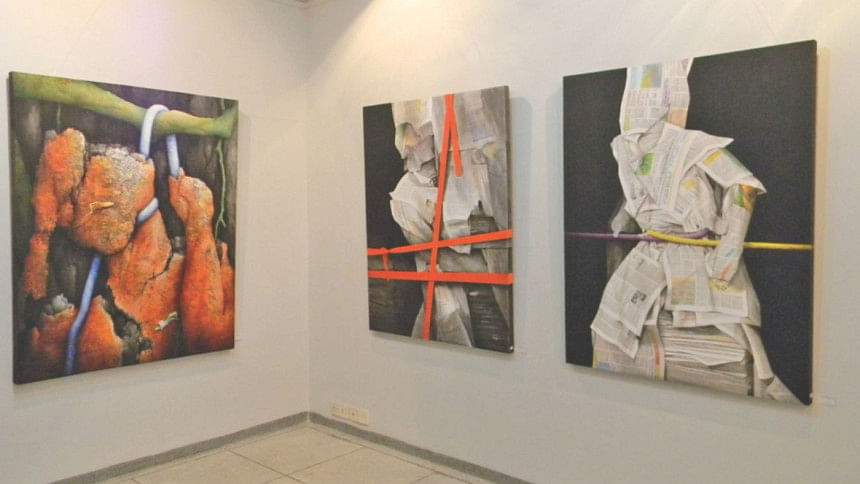
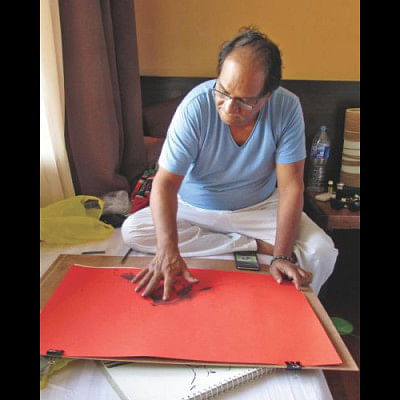
"It's the job of a gallery to bring to the public the artist who would become Qayuym Choudhury after 30 years," Goutam said.
An avid promoter of investment in art, Goutam says that people should be aware of the asset value of an art. The work of Kamrul Hasan that sold for Tk 3000-4000 in the late seventies now sell at Tk 8 lakh to 10 lakh or even more.
"So if you find real young talent, you can invest in his or her work. Large multinational companies appoint art consultants to acquire art works of upcoming artists from different countries because they are aware of the investment value," he pointed out.
By Sharier Khan
Photo: courtesy: Galleri Kaya

 For all latest news, follow The Daily Star's Google News channel.
For all latest news, follow The Daily Star's Google News channel. 



Comments